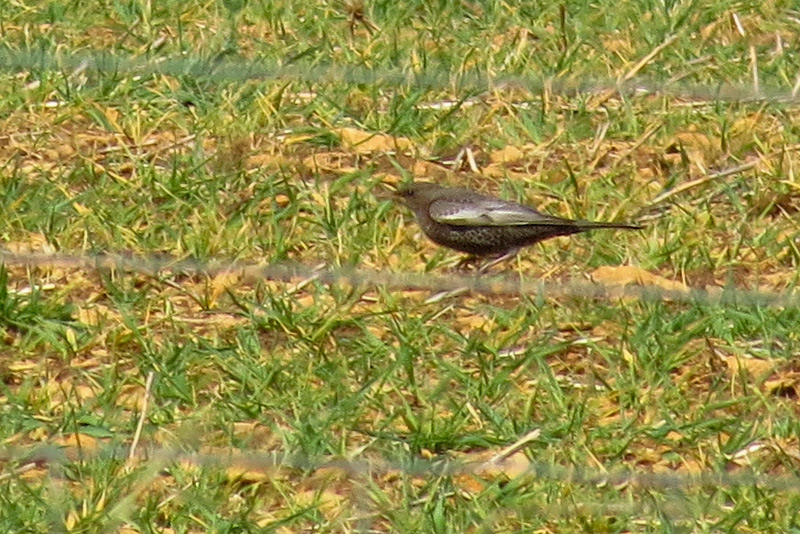I watched this Merlin on the Nene Washes on Saturday (6 April). When I saw it in flight, I thought it was a brown bird, but it perched on the damp grass and revealed itself to be blue-grey with red-brown fringes. Aha, thought I, this is the fringing on a young male, which would have hatched last year.
Now, I'm not so sure.
One of my digiscoped photographs shows the outrspread wings and tail, confirming the golden fringed feathering and barring and the barred, rather worn tail. I put it up on Twitter as a sort of bird quiz and
Katie Fuller was first to repsond that the bird was a young male Merlin, from last year's brood. She also sent me a link to a paper by
Blasco-Zumeta & Heinze about Merlin ID. Intriguingly, this paper contains some photos in the hand of a Merlin labelled as a male-like female (which I had never heard of before). I took the liberty of taking some screengrabs of the pdf to embed here, so you can see what the male-like female Merlin looks like.
You can see a strong resemblance between the male-like female (top right) and the Nene Washes bird, including the rather odd blotchy underpart pattern; the overall blue-grey upperparts with browner fringing all over and no clear areas of truly adult male like blue grey (unlike the juvenile male in the centre photo).
Even the central tail pattern (seen in the flight shot; though it may be the eye of faith) looks more like female than the male.
Again in these photos, from a differnt angle, the Nene Washes bird seems to most closely resemble the male-like female shown.
Finally, I repeat the flying shot, so you can compare the wing pattern with the spread wings above.
Until yesterday, I had never heard of male-like female Merlins, but now I wonder if that is what I took to be a young male on Saturday. What do you think?



